
Aprender es modificar o adquirir nuevas habilidades, destrezas, conocimientos, conductas y valores mediante la experimentación, el estudio, la observación, el razonamiento o la instrucción. Múltiples y variados juegos disponibles hoy en día, desde los más clásicos hasta los más innovadores, pueden ser grandes herramientas para construir una variedad de aprendizajes: lectoescritura, matemáticas, razonamiento y resolución de problemas, etc. aportando motivación e interés a los jugadores. Más allá de la estimulación de las inteligencias múltiples, fomentaremos la autoestima, incentivaremos la cooperación y el trabajo en equipo y mejoraremos el comportamiento y la actitud, entre otros muchos aspectos.
 Auditory Memory Caterpillar
29,90 € (VAT not included)
Auditory Memory Caterpillar
29,90 € (VAT not included)
 Técnicas básicas de disciplina
15,90 € (VAT not included)
Técnicas básicas de disciplina
15,90 € (VAT not included)
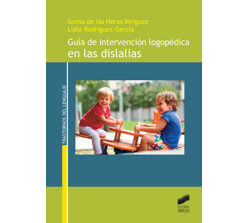 Guía de intervención logopédica en las dislalias
22,50 € (VAT not included)
Guía de intervención logopédica en las dislalias
22,50 € (VAT not included)
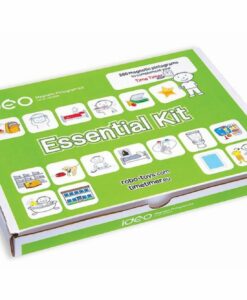 Pictograms - Essential Kit
69,00 € (VAT not included)
Pictograms - Essential Kit
69,00 € (VAT not included)
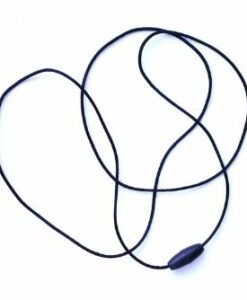 Rope for teething necklace
4,99 € (VAT not included)
Rope for teething necklace
4,99 € (VAT not included)
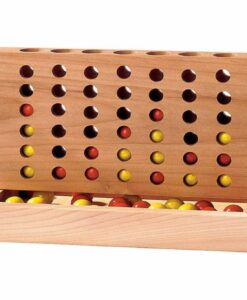 Mini 4 in a row
9,90 € (VAT not included)
Mini 4 in a row
9,90 € (VAT not included)
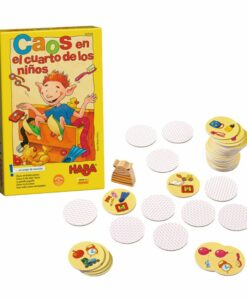 Eagle's eye view - Chaos in the children's room
11,90 € (VAT not included)
Eagle's eye view - Chaos in the children's room
11,90 € (VAT not included)
Showing 217–252 of 459 resultsSorted by latest
No account yet?
Create an AccountThis cute wooden cash register is a must-have for any store. This play box teaches the relationship between money and prices. The money and credit card have their place in the corresponding drawers and the price of the purchased items is also written on the cash register keyboard. Ideal to encourage symbolic play and, with older children, to learn to count.
Recommended for ages 3 and up. https://logopedicum.com/wp-content/uploads/2021/12/caja-registradora-madera-1-247x300.jpg 20.03 instock 3 – 6 yearsAGEAreas of DevelopmentCalculation and mathematical languageCharacters and professionsGAME TYPEGAMES AND TOYSLearning CornersLEARNINGSLogical reasoning and mathsLogical-mathematicalSymbolic and imitation gameWood 0 0.00 0 https://logopedicum.com/wp-content/uploads/2021/12/caja-registradora-madera-1-247x300.jpg 245108244684244064244929244663 20.03 16.55 0.00 0.00 2021-12-02T18:56:22+01:00Semicircular structure that recreates a rainbow of extra large size formed by 7 pieces of sturdy wood, in attractive bright or pastel colors, allows children to develop their creativity and awaken their imagination through the creation of unlimited figures. This Montesori inspired resource promotes knowledge and chromatic perception, stimulates manual psychomotor skills, encourages creative play, among many other aspects. These wooden toys are intergenerational and durable as well as being a nice decorative element that can not miss in any children's room or playroom.
Wood comes from sustainable forests and as a natural element, it stimulates the senses of touch and smell. https://logopedicum.com/wp-content/uploads/2021/12/arco-iris-grande-madera-600x729.jpg 31.34 instock GAMES AND TOYSTYPE OF TOYConstruction and manipulation gamesAGE2 – 3 years3 – 6 yearsGAME TYPECreativity gamesPEDAGOGIESPiklerReggio EmiliaWaldorfPedagogical ApproachesWaldorfPiklerReggio EmiliaAreas of DevelopmentArtistic and creativeLearning CornersArt and creativityLEARNINGSMotor skillsWood 0 0.00 0 https://logopedicum.com/wp-content/uploads/2021/12/arco-iris-grande-madera-600x729.jpg 244685244941244694244940245722 31.34 25.90 0.00 0.00 2021-12-22T14:09:39+01:00In most cases, the child should never limit himself/herself to working in isolation and in silence; rather, the work will be characterized by a constant oral elaboration of the situations that arise and by the application of all the resources available to the trainer in order to get the most out of each task. One must always be alert to detect those situations in which the child has greater difficulty and be able to determine whether it is strictly a failure to understand what has been read (caused by a possible distraction, by reading too fast, by omitting a word that alters the meaning of the sentence, etc.) or whether the problem lies in the fact that the child has not previously incorporated the concept to which reference is made. For example: if the child has to identify whether the ball is on top, underneath, to the right of the table, etc., and solves it incorrectly, it is possible that he/she has not yet clearly acquired these concepts. In such a situation, work will be backtracked to affirm these spatial notions as the reeducator sees fit.
These exercises can be applied in both individual and group sessions. In the case of group sessions, the speech therapist or teacher will be free to select, adapt or vary the work, according to the average level of learning possibilities of the group of students he/she attends.
Text in Spanish. https://logopedicum.com/wp-content/uploads/2022/01/Fichas-de-Lenguaje-y-Lectura-Comprensiva-1-247x300.jpg 13.50 instock Areas of DevelopmentBooksLEARNINGSReading and writingReading and writingReading and writing 0 0.00 0 https://logopedicum.com/wp-content/uploads/2022/01/Fichas-de-Lenguaje-y-Lectura-Comprensiva-1-247x300.jpg 245108232814244934244694244931 13.50 12.98 0.00 0.00 2022-01-20T10:22:12+01:00Algunos niños, sin embargo, llegan a la edad de adquirir la lectura sin disponer de una extensión normal del lenguaje oral o incluso sin apenas lenguaje (alumnos con sordera, con disfasia, con perfiles incluidos en el espectro autista por ejemplo): muchos de ellos pueden sin embargo aprender fácilmente a relacionar sonidos y letras : el problema es que no pueden apenas aplicar este conocimiento a los textos que encuentran en el colegio o en su casa, por falta de vocabulario o de dominio de una sintaxis compleja. Sin embargo, es a esa edad cuando resulta más fácil integrar las estrategias de acceso a un texto escrito pero los educadores nos encontramos a menudo con el problema de tener que retrasar este proceso hasta que el lenguaje de nuestros alumnos alcance un nivel suficiente.Una posible respuesta es la adaptación de textos, manteniendo un contenido suficientemente complejo como para interesar a los lectores de esa edad pero adaptando su formulación a las necesidades de nuestros alumnos.En este pequeño libro, hemos intentado ajustarnos a un vocabulario mínimo: solo 300 palabras extraídas del vocabulario más básico y usual, fácilmente representable además en otros códigos como los signos manuales (Lengua de signos o Comunicación Bimodal) o los pictogramas…Con solo 300 palabras, encontraran aquí 31 textos diferentes, cortos pero con un nivel de contenido que exigir¡ a los lectores procesar la información, interpretarla, guardarla en memoria y juzgarla, tal como lo hacen sus compañeros de 1º y 2º de primaria con textos presentados bajo una forma mas compleja.Están ordenados en función de un incremento progresivo del nivel de complejidad de sus contenidos.Son textos que también pueden ser ledos (o signados) por los adultos, si los niños no disponen todavía de una capacidad suficiente de desciframiento.
https://logopedicum.com/wp-content/uploads/2022/01/Maria-la-Ballena-247x300.jpg 16.00 instock 6 – 9 yearsAreas of DevelopmentHearing and languageTalesGAMES AND TOYSReading and writingBooksAGETYPE OF TOY 0 0.00 0 https://logopedicum.com/wp-content/uploads/2022/01/Maria-la-Ballena-247x300.jpg 244934245108232295232814244285 16.00 15.38 0.00 0.00 2022-01-21T14:44:52+01:00With these colorful building blocks we can let our imagination run wild to create infinite and curious constructions such as: a funny boat, a house of our own or a huge tower. Fantastic game to stimulate imagination, creativity, attention, concentration, fine motor skills, hand-eye coordination, balance, among many other skills.
Wood. Includes 100 pieces and a card with models to build. From 18 months. https://logopedicum.com/wp-content/uploads/2022/01/Bloques-construcc-247x300.jpg 20.81 instock 2 – 3 years3 – 6 years6 – 9 yearsAGEAreas of DevelopmentArtistic and creativeConstructionConstruction and manipulation gamesCreativity gamesFine motor skillsFine motor skillsGAMES AND TOYSHeuristic gameLearning CornersLEARNINGSMotor skillsWooden treasuresImagine and createWood 0 0.00 0 https://logopedicum.com/wp-content/uploads/2022/01/Bloques-construcc-247x300.jpg 232814244060244064244940244056 20.81 17.20 0.00 0.00 2021-12-22T16:02:22+01:00